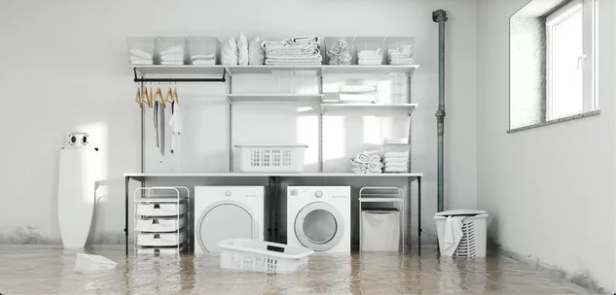- Technihouse

- Oct 12, 2021






With all the rain that we have been having for days now, many people are finding themselves feeling as if they are back at “square one” with their basements being flooded and belongings ruined.
State and local health officials have a warning for those who have to clean up after a basement flood.
Floodwaters, not only in basements, but also from flooded roadways, can contain diseased organisms that are capable of causing health issues weeks after clean up has taken place. People, especially children, should never play in flooded streets. Rainwater that mixes with sewer water backing up can be extremely dangerous.
Do not flush toilets while waiting for standing water to go down. Once the water settles, your work begins. If the volume of standing water is small, wear rubber gloves and boots. Use a wet/dry vacuum to suck up any residue. Make sure the power plug is grounded.
Open basement windows for ventilation and mop up the entire area using a mixture of bleach and water.
If sewers back up in the basement and the basement is completely flooded, do not enter unless you can safely turn off the power. If you cannot safely reach the electrical panel to turn the power off, call the electric company and ask them to do it for you so you can begin your cleaning process.
People should avoid getting contaminated water on their hands, face, clothing, etc. Clothing that has come in contact with contaminated water must be washed thoroughly. Try and wear the proper clothing during your cleaning process. When finished with the clean-up take a shower washing all parts of your body thoroughly that may have been exposed to the contaminated water.
Discard any openly stored foods that are in bags, boxes or containers that become wet. Can goods and jars should be washed using one ounce of bleach to a gallon of water. Same with children’s toys or furniture made of washable materials should be disinfected with a bleach solution as well. Throw away paper materials such as books, paper towel, toilet paper and napkins, etc.
Any wall-to-wall carpeting may have to be cleaned and sanitized by a flood cleaning service to ensure it has been done properly. Unfortunately the padding may have to be replaced.
If gas pilot lights on a hot water heater or furnace go out the amount of gas released is very small and will not pose a safety problem. If the water has gotten into the motors of electrical connections, do not use them until they are entirely dry.
If the power is out keep refrigerators and freezers unplugged and the doors left closed. Food can last up to 12 hours in a full refrigerator and up to 36 hours in a half full freezer. Once the power is back on, don’t refreeze any thawed meat or fish unless you cook it first.
A quick clean up is needed with electrical appliances that have gotten wet. Make sure the electricity is disconnected, then open up the machines and spray the motors and electrical devices with a penetrating product such as WD-40. This product is water displacing, meaning they will force water out and replace it with a protective coating. Spray liberally over all wires, motors electrical connectors, timers and other components.
Storm sewers are not supposed to back up into people’s homes, but they can, and they do. Consider having a sump pump installed with a battery-powered back up. Have your main sewer line snaked periodically, especially if there are large trees on your lot.
If the flooding is severe you may have to have the basement ozonated by a professional that uses ozone-making equipment. The ozone eliminates odors by killing mildew and microbes. This process takes 24 hours, so all people, pets and plants must vacate during this period.
If the basement had only a small flood and left it smelling with only a slight musty, mildew smell, clean everything with a bleach and water mixture and start circulating the air by opening basement windows and using fans to keep the moist air moving to the outside.
The worst thing you can do after a flood is to close the windows and turn on the heat. By doing so you will drive the moisture into the walls, floors and furnishings.
If you plan to repaint after a basement flood, don’t attempt it until you have made sure that any paneling or drywall won’t need to be replaced first. You must make sure the walls have dried thoroughly and give special attention to water stained areas. Water stains will bleed through most paint no matter how many coats are applied. The solution to that is to coat the stained areas first with a shellac or a shellac-based stain killer on the market (such as B-I-N or Enamelac). These will effectively seal water stains and prevent them from bleeding through your fresh paint.
Take photos of all flood damaged areas and items that you have lost or still may lose. If your
insurance will not cover the loss, it may be deductible on your income tax.
(Photo courtesy of Google)






